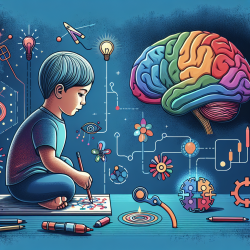Introduction
Autism Spectrum Disorder (ASD) is a complex neurodevelopmental condition that typically manifests within the first three years of life. Characterized by deficits in social skills, communication, and the presence of repetitive behaviors, understanding the neuroanatomical underpinnings of ASD in early childhood is crucial for effective intervention. Recent research titled "Autism Spectrum Disorder as Early Neurodevelopmental Disorder: Evidence from the Brain Imaging Abnormalities in 2–3 Years Old Toddlers" provides valuable insights into these early brain changes, paving the way for improved therapeutic strategies.
Key Findings
The study utilized advanced imaging techniques, including structural magnetic resonance imaging (MRI) and diffusion tensor imaging (DTI), to assess brain structure in toddlers with ASD compared to those with developmental delays (DD). Significant findings include:
- Increased global gray matter (GM) and white matter (WM) volumes in toddlers with ASD.
- Specific regional increases in GM and WM volumes, notably in the right superior temporal gyrus.
- Higher fractional anisotropy (FA) values indicating altered white matter tract integrity, particularly in the corpus callosum and posterior cingulate cortex.
Implications for Practitioners
These findings underscore the importance of early detection and intervention in ASD. Practitioners can leverage this data to tailor therapeutic approaches that address specific neuroanatomical changes. Key strategies include:
- Implementing early screening protocols to identify ASD-related brain changes.
- Developing targeted interventions that focus on enhancing social communication and reducing repetitive behaviors.
- Encouraging multidisciplinary collaboration to create comprehensive care plans that incorporate insights from neuroimaging studies.
Encouraging Further Research
While this study provides critical insights, it also highlights the need for further research to understand the full spectrum of neuroanatomical changes in ASD. Practitioners and researchers are encouraged to explore:
- The longitudinal impact of early brain changes on developmental outcomes in ASD.
- The potential for neuroimaging to guide personalized intervention strategies.
- The role of genetic and environmental factors in shaping neurodevelopmental trajectories in ASD.
Conclusion
The convergence of structural and white matter abnormalities in toddlers with ASD suggests that early neuroanatomical changes play a pivotal role in the disorder's behavioral and cognitive manifestations. By integrating these findings into practice, speech-language pathologists and other practitioners can enhance the efficacy of early interventions, ultimately improving outcomes for children with ASD.
To read the original research paper, please follow this link: Autism Spectrum Disorder as Early Neurodevelopmental Disorder: Evidence from the Brain Imaging Abnormalities in 2–3 Years Old Toddlers.










